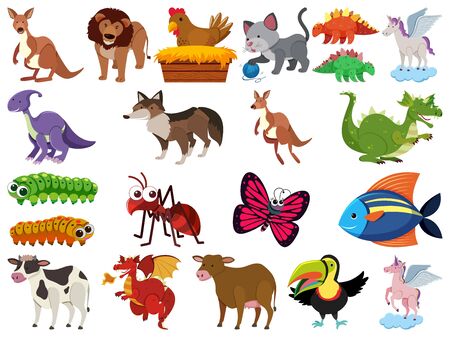Overview of the Small Pet Market in India
In recent years, India’s small animal pet market has seen remarkable growth, reflecting changing lifestyles and increasing urbanisation. While dogs and cats remain popular choices, there is a visible rise in the keeping of small pets such as rabbits, guinea pigs, hamsters, mice, birds, and even exotic reptiles. This shift is driven by several factors: limited living space in metros, busy work schedules, and a desire for low-maintenance companionship among young professionals and nuclear families. In cities like Mumbai, Bengaluru, Delhi, and Hyderabad, pet stores now dedicate entire sections to these small animals, offering not only pets but also a wide range of specialised products and services tailored to their needs.
Popular Pet Care Products for Small Animals
When it comes to small animals like rabbits, guinea pigs, hamsters, and birds, the Indian pet care market has evolved rapidly in recent years. More pet parents are now seeking quality products that cater to both their pets’ needs and Indian cultural preferences. Here is a look at some of the most popular categories and emerging trends in pet care products for small animals across India.
Food & Nutrition
In India, pet owners are increasingly aware of the specific dietary needs of different small animals. Brands offer food blends that include traditional grains, seeds, and locally sourced vegetables, keeping affordability and freshness in mind. Many Indian households prefer vegetarian options or foods without beef/pork ingredients due to cultural and religious beliefs. The table below summarizes some popular food types:
| Animal | Common Food Types | Indian Preferences |
|---|---|---|
| Rabbits | Pellets, green leafy vegetables, carrots | Preference for fresh greens available at local markets |
| Guinea Pigs | Grass hay, pellets, fruits | Locally grown hay and seasonal fruits |
| Hamsters | Seeds mix, grains, occasional fruit bits | Spiced/masala-free mixes |
| Birds (Parrots, Budgies) | Millet sprays, seed mix, cuttlebone | No artificial colours or flavours; preference for natural options |
Grooming Supplies
The grooming segment is expanding with shampoos, brushes, nail clippers, and even herbal powders specially formulated for small animals. Many Indian brands have launched ayurvedic grooming solutions—herbal dust baths for hamsters or neem-based sprays for rabbits—that appeal to families familiar with traditional remedies. These products are gentle on sensitive skin and often come with mild fragrances derived from tulsi or sandalwood.
Habitat Accessories
Pampering pets with comfortable habitats is becoming more common in urban India. Cage accessories such as soft bedding made from cotton or coconut coir (a sustainable choice), hideouts crafted from bamboo or clay (reflecting Indian handicraft traditions), and temperature-resistant water bottles are gaining traction. Especially during the summer months, cooling pads or ceramic shelters are highly sought after.
Emerging Trends in Accessories:
- Bamboo ladders and swings for birds (eco-friendly)
- Dust-free bedding options for respiratory health
- Cage expansions designed to fit smaller urban apartments
Conclusion on Popular Products
The Indian market’s unique combination of tradition and innovation has led to a diverse range of pet care products suited for small animal companions. As awareness grows, so does the demand for safe, natural, and culturally appropriate items that keep both pets and their humans happy.
![]()
3. Essential Pet Care Services
When it comes to pet care for small animals in India, the landscape is evolving rapidly, especially in metro cities and tier-2 towns. The demand for reliable services goes far beyond just food and toys. Pet parents today are keen on ensuring a holistic well-being for their furry or feathered friends, leading to a rise in specialised offerings.
Veterinary Care: Backbone of Pet Wellness
Access to quality veterinary care is one of the most important aspects of pet ownership. In cities like Mumbai, Delhi, Bengaluru, and Hyderabad, multi-speciality vet clinics are now common, offering not only general health check-ups but also advanced diagnostics and surgeries. Many clinics provide home visit options—a boon for busy professionals or elderly pet owners. In smaller towns, government-run dispensaries and local vets often serve as the primary source of animal healthcare, with a strong emphasis on vaccination drives and deworming camps conducted by NGOs.
Grooming Parlours: More Than Just a Bath
Grooming parlours for small animals have become popular hangout spots in urban India. From nail clipping to fur trimming and even “paw-dicures,” these parlours cater to Indian breeds like Indies, Lhasa Apsos, and rabbits with climate-appropriate grooming techniques. Some grooming centres offer ayurvedic treatments and herbal shampoos specially formulated for sensitive pets—a nod to India’s traditional wellness practices.
Boarding Facilities & Pet Sitting: A Home Away from Home
With families travelling more frequently, boarding facilities are booming across Indian cities. Modern pet boarding options include air-conditioned kennels, CCTV monitoring for anxious parents, and even WhatsApp video updates. Unlike western models, many Indian boarding homes operate out of residential spaces where pets mingle freely under supervision—reflecting the country’s community-oriented ethos. For those who prefer in-home care, professional pet sitters can be hired through platforms or word-of-mouth networks; they often bring localised knowledge about feeding habits and festival-related safety precautions.
Unique Features in Indian Context
What sets India apart is its blend of tradition and modernity—services often accommodate religious customs (like fasting days) and street animal rescue tie-ins. Many service providers collaborate with local shelters, offering discounted rates for rescued or adopted pets. Community-driven initiatives such as weekend “pet melas” (fairs) introduce small animals to new families while providing free health checks and grooming demos—making pet care services both accessible and culturally relevant across the country.
4. Cultural Influences and Local Practices
India’s rich cultural diversity and unique household dynamics play a significant role in shaping how small animals are cared for, as well as the products and services that gain popularity. The country’s traditions, religious beliefs, and family structures all impact attitudes toward pet ownership and specific pet care routines.
Traditional Attitudes Towards Small Pets
Historically, Indian households have favored larger animals such as cows, dogs, or birds, but recent years have seen a growing interest in small pets like rabbits, guinea pigs, hamsters, and exotic birds. In many regions, pets are viewed as part of the family, yet the level of involvement with their daily care can vary depending on local customs and generational perspectives.
Influence of Religion and Festivals
Religious practices often dictate which animals are considered auspicious or acceptable as pets. For example, rabbits are seen as lucky in some communities. During festivals like Diwali or Holi, pet care routines may be adjusted to keep small animals safe from noise or celebratory activities. Some families even include their pets in rituals or festivities.
Regional Preferences and Product Choices
The choice of products—whether it’s bedding material, dietary supplements, or grooming tools—is heavily influenced by regional availability and climate. For instance:
| Region | Popular Small Pets | Preferred Products/Services |
|---|---|---|
| North India | Hamsters, Rabbits | Cage heaters (winter), Herbal bedding |
| South India | Lovebirds, Guinea Pigs | Cooling mats (summer), Coconut-based treats |
| East India | Sugar Gliders, Parakeets | Tropical fruits, Wooden toys |
| West India | Dwarf Rabbits, Budgies | Pest-control sprays (monsoon), Millet feeds |
Household Structures and Daily Routines
The prevalence of joint families means there may be multiple caregivers for one pet, ensuring more consistent feeding and cleaning schedules. However, busy urban lifestyles sometimes lead to outsourcing pet care through services such as pet boarding or mobile grooming. Rural areas may rely more on home remedies and locally available resources rather than commercial products.
In summary, India’s multifaceted culture shapes not only the types of small animals kept as pets but also the everyday practices and preferences regarding their care. Understanding these nuances is essential for brands and service providers seeking to connect with Indian consumers in the rapidly growing pet care market.
5. Challenges and Opportunities in the Indian Market
When we look at the Indian market for pet care products and services for small animals, it is a space filled with both unique challenges and promising opportunities.
Awareness Gaps
One of the primary obstacles is the lack of awareness among many Indian pet parents regarding specialised care for small animals like rabbits, guinea pigs, hamsters, and birds. In metro cities like Mumbai, Bengaluru, or Delhi, people are slowly becoming familiar with these pets’ specific dietary and healthcare needs. However, in Tier II and Tier III cities, there remains a misconception that small animals require minimal attention or can thrive on leftovers. Educational campaigns by brands and NGOs are crucial to bridge this gap.
Accessibility Issues
Another challenge is accessibility. While online platforms have made products more available in big cities, physical pet stores with dedicated sections for small animals are still rare in many parts of India. Pet parents often struggle to find quality bedding, food pellets, or grooming services locally. This presents an opportunity for entrepreneurs to expand distribution networks and partner with veterinary clinics even in smaller towns.
Affordability Concerns
Affordability also plays a significant role in shaping consumer behaviour. Many imported products are priced out of reach for middle-class families. At the same time, locally manufactured goods sometimes compromise on quality due to cost-cutting measures. Brands that can innovate to offer high-quality yet pocket-friendly products will win the trust of Indian households.
Growth Opportunities
The rapid urbanisation and rise of nuclear families have led to an increase in pet adoption rates across India. Social media influencers and celebrities showcasing their small pets have also contributed to changing mindsets. There is a growing demand for customised diet plans, vet-on-call services, and even luxury boarding options for small animals. Entrepreneurs who understand Indian sensibilities—like using millet-based feed or herbal grooming solutions—can carve a niche for themselves.
Navigating Regulatory Hurdles
The regulatory environment is evolving but still fragmented when it comes to pet food safety standards or animal welfare guidelines for exotic species. Brands need to invest in compliance and work closely with associations such as PFA (People for Animals) to build credibility and ensure ethical practices.
Conclusion
The Indian market’s diversity means that one-size-fits-all solutions rarely work. By focusing on education, improving access, balancing cost with quality, and addressing local preferences, both established brands and new entrants can create meaningful impact while building sustainable businesses in the small animal pet care segment.
6. Trends Shaping the Future of Pet Care
The Indian pet care industry for small animals is witnessing a fascinating transformation, driven by new trends that are redefining how pet parents care for their furry friends. With changing lifestyles and increased awareness, several key trends have emerged to shape the future of this market.
Digitisation: The Digital Pet Revolution
The rise of digital platforms has made it easier than ever for Indian pet owners to access information, products, and services. From mobile apps that track vaccination schedules to online veterinary consultations (tele-vet), technology is bridging gaps in pet healthcare. E-commerce giants like Amazon India and Flipkart now have dedicated sections for small animal supplies, while homegrown startups such as Heads Up For Tails and Petsy are customising offerings for Indian needs. This digital convenience is especially appreciated in metro cities like Bengaluru, Mumbai, and Delhi.
Home Delivery Services: Convenience at Your Doorstep
One of the most welcome changes in recent years is the boom in home delivery services for pet products and even medicines. During the lockdowns, many Indian families relied on these services to keep their rabbits, hamsters, guinea pigs, and birds well-stocked with essentials—pellets, hay, treats, toys, and grooming items. Apps like Dunzo and Swiggy Genie now facilitate quick deliveries from local pet stores, making life easier for busy urban pet parents. This trend looks set to grow beyond the metros into Tier-2 cities as well.
Community-Based Care: Building Pet-Friendly Networks
The spirit of community has always been strong in India, and it’s now influencing pet care too. Local WhatsApp groups connect small animal owners to share tips on diet or vet recommendations. Community adoption drives and animal welfare NGOs are helping more people understand responsible ownership. In cities like Pune and Hyderabad, volunteer-run shelters provide temporary foster care or rescue support for abandoned rabbits or exotic pets. These efforts build a sense of togetherness among pet lovers and help spread best practices rooted in Indian realities.
Looking Ahead: A Bright Future
As more Indian households welcome small pets, these trends—digitisation, doorstep delivery, and vibrant community support—will continue shaping the landscape of pet care products and services. For both seasoned hobbyists and first-time bunny or hamster parents, the future promises better access, greater convenience, and stronger networks of care tailored to Indian culture.


